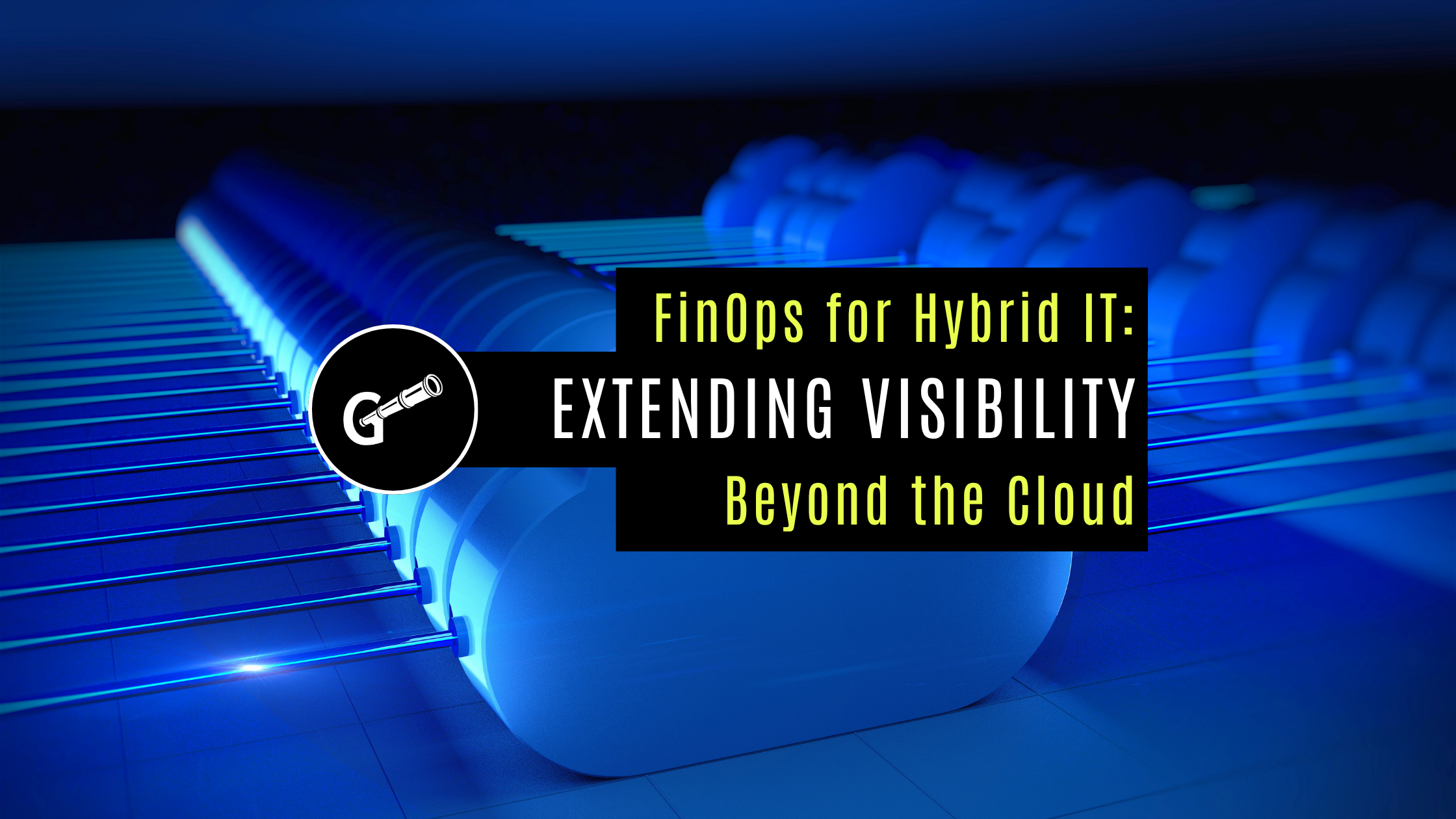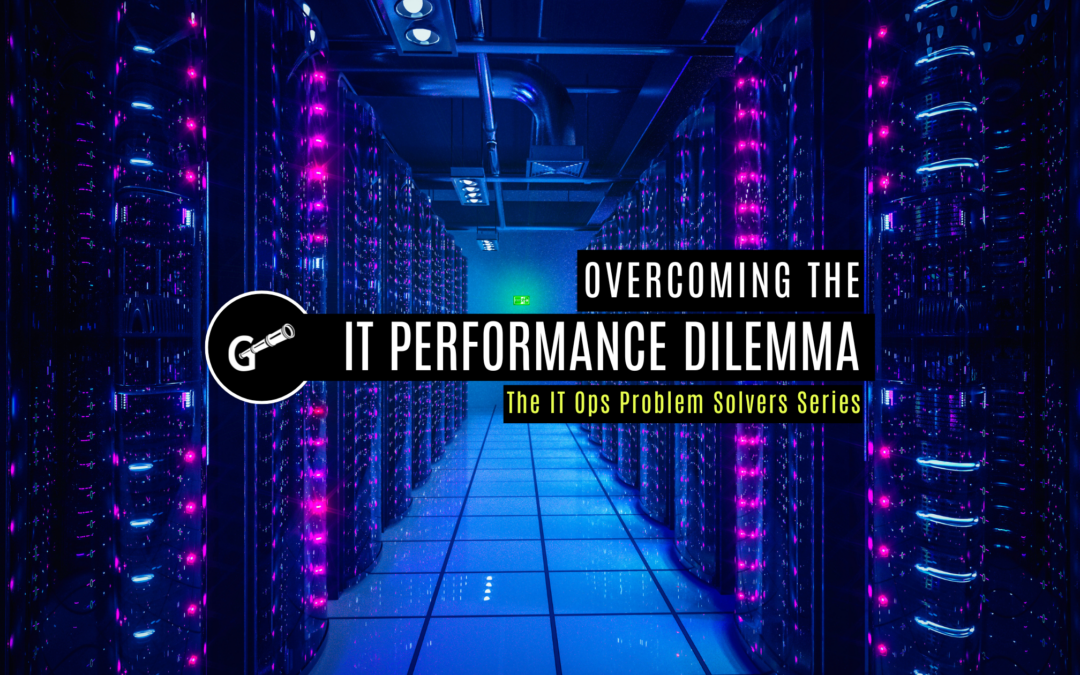Controlling IT spend used to mean managing cloud invoices. Today, it’s far more complex. Modern enterprises run workloads across multiple platforms — cloud, virtualized, and on-premises — each with its own cost structures and dependencies. That’s why FinOps for hybrid IT has become essential.
Extending FinOps principles beyond cloud services enables organizations to see how every part of the infrastructure contributes to cost, efficiency, and business value. It connects the dots between usage and performance, empowering IT and finance teams to make decisions grounded in data, not assumptions.
This article explores the evolution of FinOps from a cloud-centric practice to a holistic financial operations strategy, showing how Galileo brings clarity, accountability, and measurable savings to the entire IT stack.
Many organizations are oversubscribed simply because they lack the right tools and visibility. For more than two decades, Galileo has been helping teams right-size and optimize their environments, long before FinOps became the business practice it is today.”
– Tim Conley, Galileo Founder & Principal of ATS Group
FinOps for Hybrid IT Requires Full-Stack Visibility
Uncovering inefficiencies with unified visibility
FinOps is no longer a “nice to have.” As IT budgets tighten and infrastructure grows more complex, organizations are under pressure to maximize value from every dollar spent. While most people associate FinOps with cloud cost management, the real challenge lies in extending those same principles to the entire IT stack, cloud and on-prem alike. Without unified visibility, critical costs and inefficiencies remain hidden.
That’s where Galileo comes in. Galileo delivers end-to-end observability, empowering IT and finance teams to work from a single source of truth, cutting waste and enabling smarter decisions.
What Is FinOps and Why It Matters for Hybrid IT
A brief summary of FinOps
FinOps is a business practice that helps organizations identify inefficiencies and optimize resources across their IT environment, delivering greater financial control and predictability. While it began as a framework for tracking and managing cloud computing costs, its principles have expanded to encompass the whole IT landscape. Today, FinOps is a critical discipline for managing both costs and value across hybrid IT environments.
At the heart of FinOps is a cultural shift, bringing technology, finance, and business teams together in a shared accountability model. Instead of working in silos, these groups collaborate to ensure IT investment and spending decisions are made with complete visibility into both technical requirements and business priorities.
The FinOps Foundation, a project of the Linux Foundation, defines FinOps as:
[FinOps is] an operational framework and cultural practice that maximizes the business value of cloud and technology, enables timely data-driven decision making, and creates financial accountability through collaboration between engineering, finance, and business teams.”
This teamwork encourages:
- Shared understanding across departments so engineers understand cost impact, finance understands technology drivers, and business leaders see the trade-offs in real time.
- Smarter decisions that balance performance, cost, and innovation.
- Greater business value from every IT dollar spent.
It’s important to understand that FinOps isn’t just about cutting costs. It’s about making smarter, data-driven IT investments that maximize business value across cloud, on-premises, and hybrid environments.
Why FinOps Must Extend Beyond the Cloud to Hybrid IT
Why hybrid IT needs the same cost visibility.
While FinOps began as a way to manage cloud costs, today’s IT environments are hybrid by design, spanning cloud, on-premises, and everything in between – from virtual machines and storage to networking and middleware. Limiting FinOps to cloud alone leaves blind spots: hidden costs in storage, underutilized compute capacity, and inefficiencies across networks and other infrastructure.
By extending FinOps principles to the whole IT stack, organizations achieve hybrid IT optimization, uncovering opportunities to reduce waste and improve performance.
Benefits of FinOps for the entire IT stack include:
- Optimize resource allocation — Identify underutilized or overprovisioned assets across cloud and on-premises environments.
- Reduce total cost of ownership (TCO) — Eliminate hidden costs in compute, storage, and networking to improve financial predictability.
- Increase financial accountability — Align engineering, finance, and business teams around shared visibility into IT spend and usage.
- Improve performance and agility — Make smarter, faster decisions on IT investments that balance cost, performance, and growth.
Extending FinOps to hybrid IT gives teams the insight to optimize not just spend, but performance and scalability across their entire environment.
The Role of Visibility in FinOps for Hybrid IT
How observability helps connect usage, cost, and performance data
Visibility is the foundation of FinOps, especially in hybrid IT environments where workloads and spending are distributed across multiple platforms. Without a clear picture of how resources are consumed end-to-end, teams can’t effectively manage costs or align investments with business priorities. Too often, IT and finance teams are forced to make decisions with incomplete or siloed data, tracking only cloud spend while overlooking the broader IT landscape.
However, FinOps isn’t just about tracking bills; it’s about understanding what’s driving them. That requires deep insight into usage patterns, workloads, dependencies, and inefficiencies across the entire environment, from cloud services to on-premises infrastructure. When teams can see how systems are connected, where bottlenecks occur, and which resources are underutilized, they gain the power to act strategically instead of reactively.
True FinOps success depends on breaking down visibility silos. Finance teams need to see beyond invoices, IT teams need context on cost impacts, and business leaders need reliable data to guide decisions. Unified visibility connects these perspectives, creating a single source of truth that enables collaboration, accountability, and smarter decision-making.
The real power of FinOps emerges when organizations achieve end-to-end visibility across their IT environment, cloud and on-premises alike. With unified insights, teams can:
- Optimize resources by identifying and eliminating waste.
- Predict and control costs with accurate usage data.
- Enable collaboration by giving engineering, finance, and business teams a single source of truth.
- Drive a smarter strategy by connecting infrastructure performance directly to business outcomes.
In short, visibility transforms FinOps from a cost-tracking exercise into a framework for continuous optimization and business value creation.
How Galileo Delivers Smarter FinOps
Technical insights for hybrid environments
Executing FinOps effectively requires visibility tools that deliver granular, trustworthy insights across the entire environment, from cloud workloads to on-prem systems. That’s the foundation of true hybrid IT optimization.
Galileo delivers exactly that – providing FinOps tools and technical insights IT teams need for hybrid IT optimization and cost control.
Key technical capabilities include:
- Detailed Metrics – Granular observability into server, storage, database, SAN, and cloud assets across your entire enterprise.
- Unified Hybrid Visibility – Correlate metrics from cloud, on-premises, and hybrid systems in a single dashboard, eliminating data silos.
- Dependency Mapping – See how applications, databases, and storage interact, making it easier to identify bottlenecks and inefficiencies.
- Automated Analytics – Detect overprovisioned resources, underutilized systems, and abnormal usage patterns to guide right-sizing decisions.
- Actionable Reporting – Provide engineering, operations, and finance teams with real-time insights supported by performance data retained indefinitely, enabling accurate capacity planning and cost forecasting.
- Lifetime Expert Support – Every customer is enrolled in Galileo’s Continued Success program, which provides expert guidance, free of charge, for the lifetime of any Galileo agent subscription, covering installations, trials, enterprise support, and personalized training.
With these capabilities, Galileo empowers IT teams to take a data-driven approach to infrastructure optimization, reduce waste, and maintain peak performance across the full IT stack. These capabilities empower IT teams to take a data-driven approach to infrastructure optimization, minimize waste, and maintain peak performance across the full IT stack.
Key Galileo Features that Power Smarter FinOps
Tagging, Cost Optimization, Capacity, and Collaboration
FinOps requires actionable data, collaboration, and the ability to connect financial and technical insights. Galileo delivers these critical elements through FinOps tools designed to help organizations analyze and optimize their IT environments.
Here are four Galileo capabilities that make FinOps practical, measurable, and collaborative:
- Asset Tagging for Granular Insights
Effective resource tagging across the IT environment is a critical component of FinOps. It allows teams to understand what assets are used by what projects or business units and helps to uncover any orphan or unused assets. Asset tagging also helps to support accountability of IT resources and to gain cost efficiency.
Galileo makes it easy to tag assets across the hybrid IT landscape. Using the Galileo Tag Manager, teams can assign custom, user-defined tags to any monitored asset to enable the allocation of costs and performance metrics to the right business units, applications, or projects.
Customer Example: As part of a cost reduction initiative, a large U.S.-based insurance provider needed to complete a comprehensive infrastructure analysis of over 200 physical servers. Using Galileo, the organization gained the insight needed to reduce its physical servers by 87% and save millions on annual software costs. Read the story. - Cost Optimization
Improving the efficiency and cost effectiveness of an organization’s IT design and estate involves the analysis of many elements, including acquisition costs, ongoing maintenance, utilization, overage charges, performance, personnel/skills, and more. With today’s complex IT environments, organizations are challenged with staying on top of their landscape’s usage and cost efficiency.
With Galileo-powered infrastructure visibility, advanced analytics, and reporting, organizations can see every asset within their environment and make informed, strategic decisions – even the assets you didn’t know you had or their hidden costs.
Customer Example: A global technology solutions provider was relying on legacy storage management tools that made it difficult to track and control costs fully. Using Galileo’s capabilities, the team was able to identify and analyze the usage and develop a consolidation plan, replacing the old storage environment with a new, more efficient solution. This not only reduced their licensing costs but also improved their overall storage efficiency. This example underscores the importance of financial visibility and strategic planning in FinOps, resulting in cost optimization. - Capacity Reporting & Trending
Forecasting is a key FinOps capability that helps teams make cost-effective, data-driven decisions across hybrid environments, anticipating demand and avoiding costly overprovisioning. Forecasting involves the creation of a model based on future costs and values, historical spending patterns, planned changes, and several additional metrics. (See FinOps Foundation Framework for details.) Whether for cloud usage or hybrid IT, capacity reporting and trending patterns are critical elements to build an accurate forecast.
With detailed reporting and trending capabilities, Galileo helps teams forecast future needs, right-size environments, and avoid overprovisioning.
Customer Example: A principal agency of the U.S. federal statistical system relies on Galileo’s trending analysis to anticipate storage capacity needs over an annual period. This proactive approach enables the agency to make informed decisions about its storage needs, such as whether to decommission older storage units and plan for future growth, and avoid costly emergency expansions. - SMARTboards for Cross-Team Collaboration
Collaboration is one of six defining principles of FinOps. The partnership between IT, finance, and business stakeholders is key to improving efficiency and innovation. The FinOps Foundation advises that these teams work together in near real time, as the cloud operates on a per-resource, per-second basis.
Enter Galileo SMARTboards, innovative, customizable dashboards that provide a visual workspace for teams to view key metrics, track progress, and align decisions. The newly released SMARTboards 2.0 deliver a sharing option enabling collaboration across the team or a cross-functional team.
Customer Example: A leading U.S.-based managed service provider (MSP) leverages Galileo to maintain the health of client environments and proactively plan for growth. The MSP relies on Galileo’s SMARTboards 2.0 to efficiently view metrics across the environment, proactively monitoring and performing trend analysis. Moreover, they collaborate with their managed clients by easily sharing pertinent dashboard data points to make informed decisions.
With these features, Galileo bridges the gap between technical performance data and financial accountability — enabling organizations to take FinOps from concept to real-world results.
Getting Started with FinOps for Hybrid IT Using Galileo
A practical approach to FinOps with Galileo
Adopting FinOps across a hybrid IT environment can feel complex, but a “walk before you run” approach allows teams to build confidence and see early wins. For most teams, success begins small.
Here’s how to take a structured, low-risk approach to FinOps adoption with Galileo:
- Pilot a Small FinOps Initiative – Focus on a single department, application, or infrastructure segment. This lets your team test FinOps practices without overwhelming the organization.
- Connect Galileo to Relevant Systems – Ensure your FinOps tools and teams have access to the same real-time dashboards.
- Measure and Analyze – Use Galileo’s deep metrics and dependency mapping to identify inefficiencies, underutilized resources, and performance bottlenecks within the pilot scope.
- Collaborate Across Teams – Share insights between IT, finance, and business stakeholders to ensure optimization decisions balance performance, cost, and business priorities.
- Scale and Repeat – Apply lessons learned from the pilot to additional departments or infrastructure segments, continuously monitoring and refining resource allocation for efficiency and cost control.
Starting with a targeted pilot ensures that FinOps initiatives are manageable, measurable, and aligned with business objectives. Galileo’s unified observability makes it easy to see the whole picture, understand dependencies, and act with confidence — even in the first small deployment.
Conclusion: Smarter FinOps with Galileo
Transform FinOps with Full-Stack Insights from Galileo
FinOps goes beyond tracking cloud costs. It brings financial accountability and operational efficiency to the entire IT stack, creating a unified approach to managing hybrid infrastructure. With Galileo, organizations gain the unified visibility needed to reduce costs, right-size infrastructure, and align IT performance with business goals.
Whether you’re just starting your FinOps journey or expanding beyond cloud, Galileo empowers teams with end-to-end FinOps visibility to see everything — and optimize anything.
Ready to optimize your IT stack and reduce costs?
Request a demo with Galileo today and see how full-stack visibility drives smarter FinOps.




